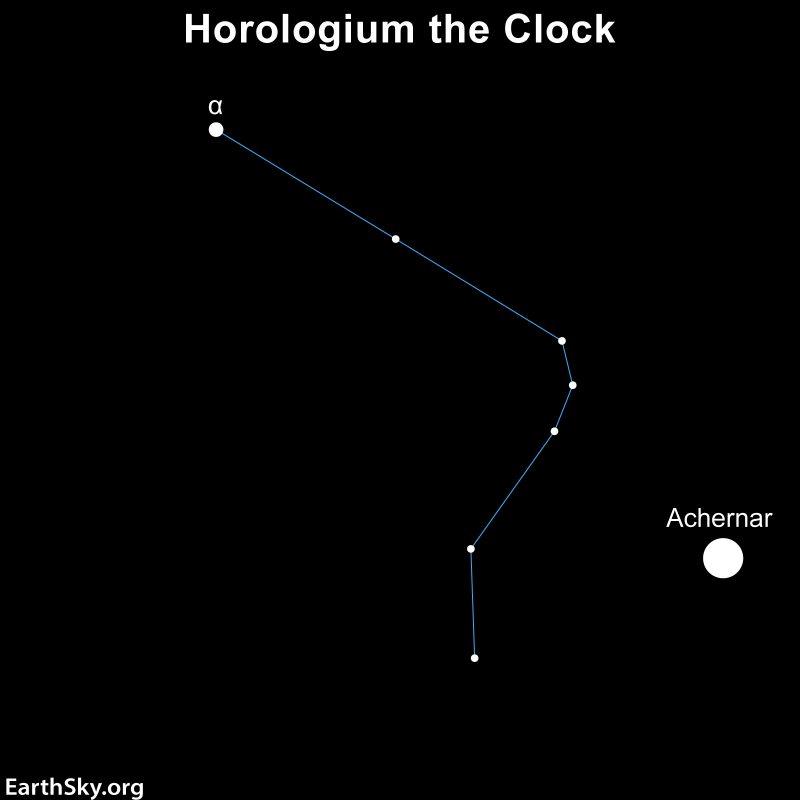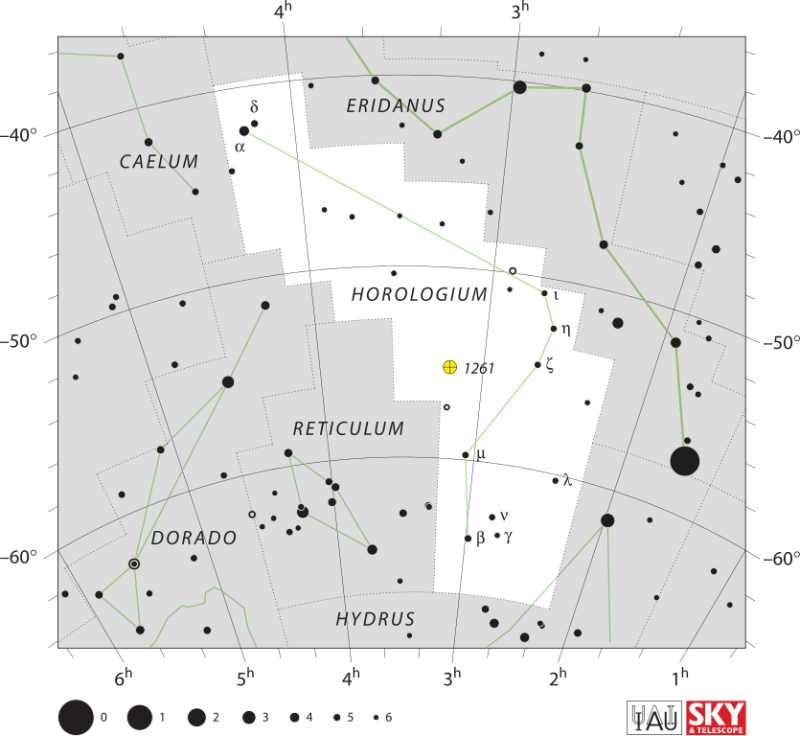
Horologium is one of the 14 constellations named by Nicolas-Louis de Lacaille, a French astronomer who surveyed the southern sky in the 1700s. It ranks 58th in size out of the 88 constellations. Horologium is supposed to represent a pendulum clock, though the dim stars here are not particularly distinctive. Only one of its stars is brighter than 4th magnitude. Observers in the Southern Hemisphere can see the constellation best around the month of December.
EarthSky 2022 lunar calendars now available! They make great gifts. Order now. Going fast!
How to find Horologium the Pendulum Clock
The easiest way to find Horologium is to first locate the bright star Achernar in Eridanus the River. If you can trace the first half of the River away from bright Achernar, Horologium is the darker patch of sky just to the southeast of this stretch of the river.
Southern Hemisphere’s summer is the best time to spot Horologium. The Pendulum Clock is high overhead once the sky gets truly dark.

Stars of Horologium
The brightest star in Horologium lies 115 light-years away. Alpha Horologii is magnitude 3.85, still a rather dim star. In some drawings of the constellation, this star marks the pendulum of the clock, while in others it marks one of the weights. The orange giant star is in the stage of swelling as it nears the end of its life.
The rest of the stars of Horologium are so dim that they have been “lost” over the years. De Lacaille originally named 11 stars with Greek designations, from Alpha to Lambda. Astronomers who came along after de Lacaille couldn’t find some of the stars he named and named their own with the same Greek letters; therefore some of the stellar designations have changed with time.
The constellation holds a number of variable stars, including R Horologii. This star disappears and returns every 13 months. Its brightest magnitude is 4.7, which makes it visible with the unaided eye. As it drops to minimum brightness, it sinks to just magnitude 14.3, making it much dimmer than even Pluto. You’d need a hulking 12-inch telescope to spot R Horologii at its minimum.
Deep-sky objects in Horologium
Horologium contains a supercluster of galaxies, named the Horologium-Reticulum Supercluster, though it lies along Horologium and Eridanus. This massive concentration of galaxies spans 12 by 12 degrees, a huge swath of sky considering the full moon spans just a half degree of sky. Unfortunately for the backyard observer, the more than 300,000 galaxies found here are too faint for most amateur telescopes.
For a pair of galaxies that you might be able to pick up in large scopes, try NGC 1510 and NGC 1512. These neighboring galaxies in Horologium are around magnitude 10. This pair are not just a line-of-sight coincidence. The two galaxies, lying 30 million light-years away, will soon become one.

Bottom line: Horologium the Pendulum Clock is a constellation that lies in southern skies. Observers can best spot this constellation around the month of December.











